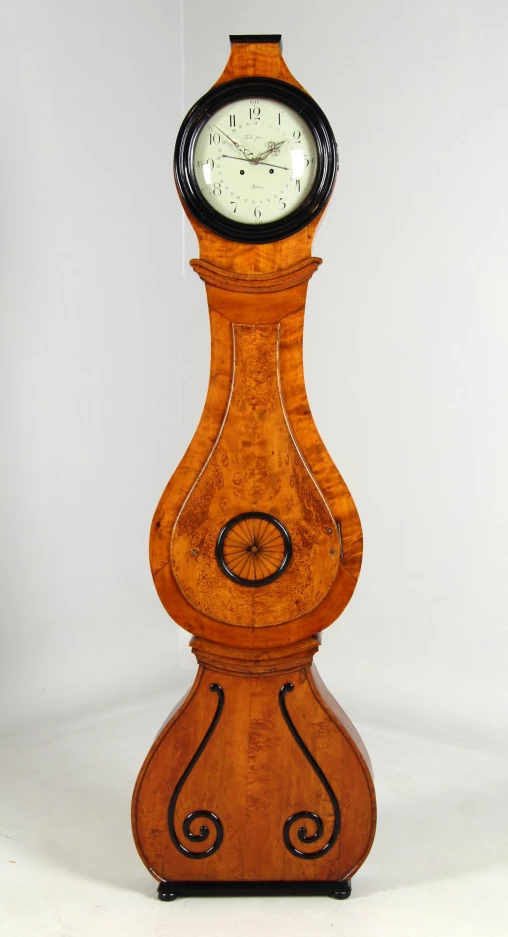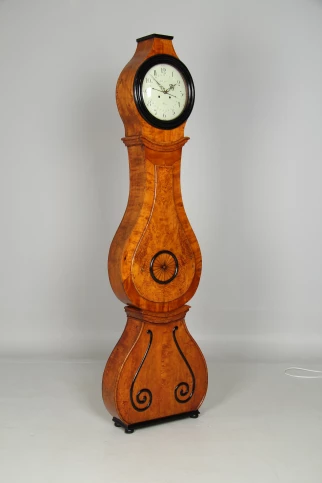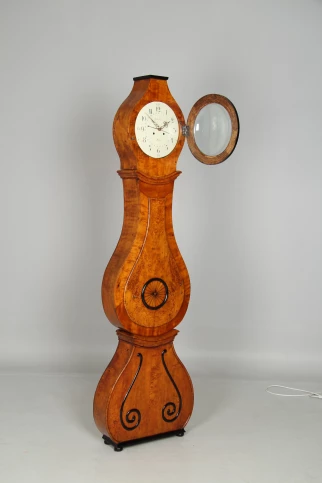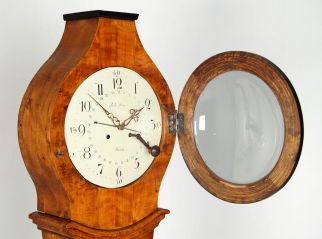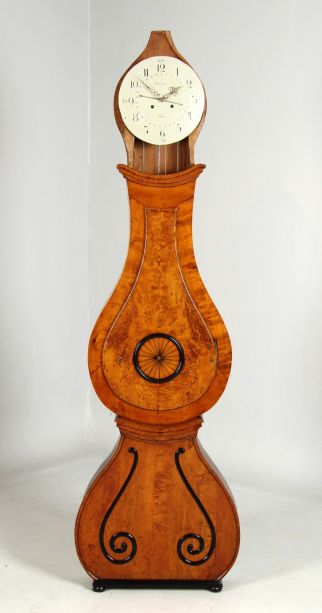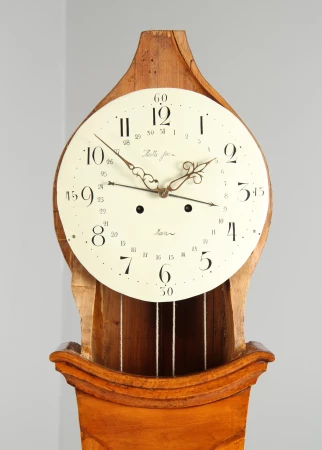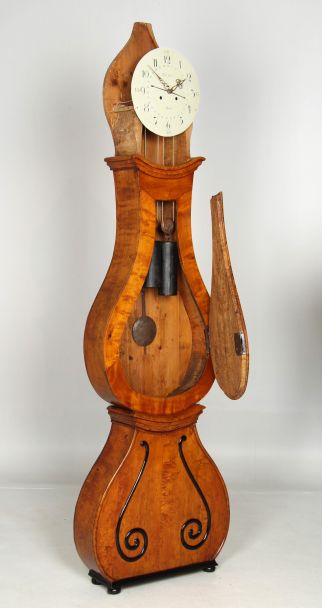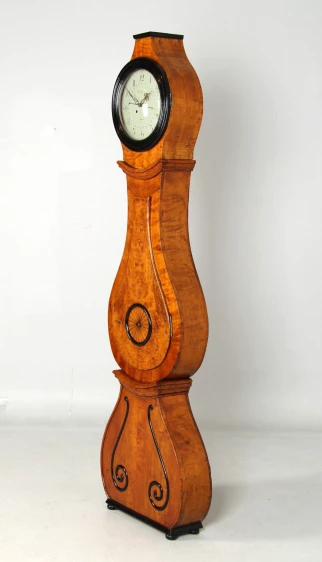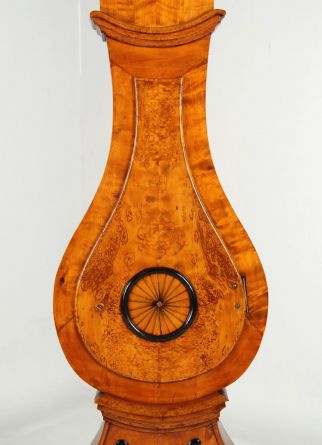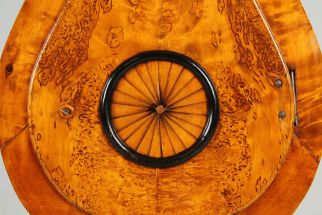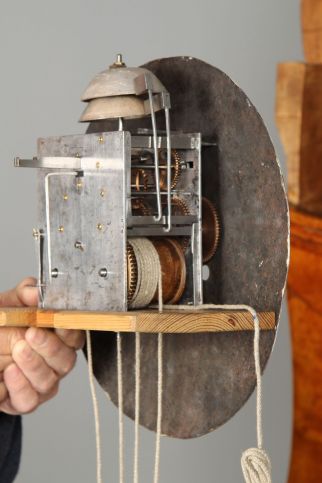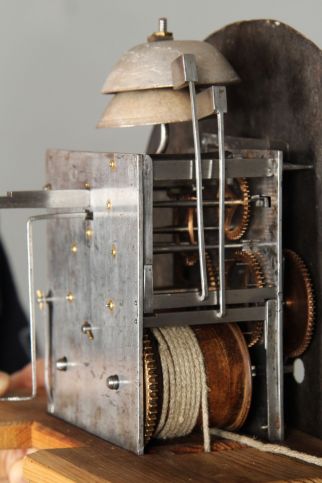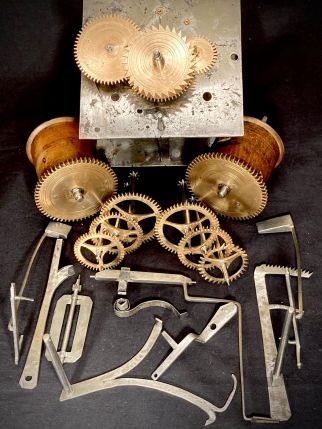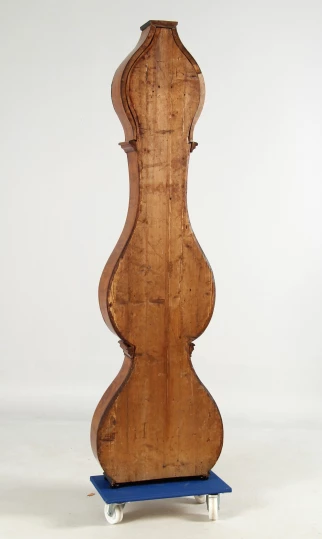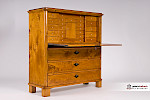Antique Mora grandfather clock made from solid birch
Sweden
Birch tree
Mid 19th century
Dimensions: H × W × D: 208 × 54 × 19 cm
Description:
Antique grandfather clock in typical Swedish form with an upwardly tapering base, a pear-shaped centre section and a round top with a pedestal-like finial. The design in solid birch wood is unusual and rather rare - most clocks of the time were made of softwood and coloured. The door of this model is made of bookmatching, solid Karelian birch wood, a variety of silver birch common in northern Scandinavia with a characteristically flamed grain pattern.
Instead of a classic viewing window for the pendulum, this model features a sun wheel assembled from small pieces of veneer, the fire shading of which creates an almost three-dimensional effect. Like the dial, it is framed by a blackened frame. Further ebonisation can be found in the base area, at the top and in the volute-like curved applications of the lower case.
The finely painted dial with Arabic hour and quarter-hour numerals has a separate date display. The date is indicated by an arrow-shaped steel hand, while the time is shown by two finely sawn brass hands in the typical Mora design.
The dial is signed: Mattsson Mora. The Mattsson clockmaking family was active in Mora for several generations and is mentioned by name in Gunnar Pipping - Urmakares och klockor i Sverige & Finland on page 383.
The movement is a weight-driven 8-day pendulum movement typical of the Dalarna region in which it originated, with an iron base, a brass gear train and wooden pulleys for the weights. The comparatively light pendulum with an iron pendulum bob and the hand-painted sheet iron dial are also typical of this origin.
The striking mechanism strikes two bells every hour.
Interesting facts:
Mora is located in the central Swedish region of Dalarna, an important centre of Swedish folk art.
From the late 18th century onwards, clock production here was based on the division of labour: the raw parts of the clockworks, such as gears, plates and shafts, were mostly prefabricated in the ancillary trades, e.g. by farmers during the winter, and the specialised clockmaker took over the filing, drilling, adjustment and technical fine-tuning. Additional functions, such as the date in this case, were also added by the specialist, usually at the customer's request. The cases were made separately by the cabinetmaker, with buyers choosing the movement and case independently of each other, which in turn led to a wide variety of styles.
The characteristic shape with a swinging silhouette became the typical hallmark of Mora clocks from around 1800.
Condition:
Beautiful, restored condition of the case with a shellac hand polish. The movement has been completely dismantled, cleaned from top to bottom and overhauled. The dial has been restored and is in perfect condition.
Price: 4150,-€
Please refer to the following specialised literature:
Barbro Åstrand - Gamla ur Ur Kulturens samlingar from p. 116
Gunnar Pipping - Urmakares och klockor i Sverige & Finland p. 172, 383
Article found under: Clocks
Add to shopping cartAlso interesting
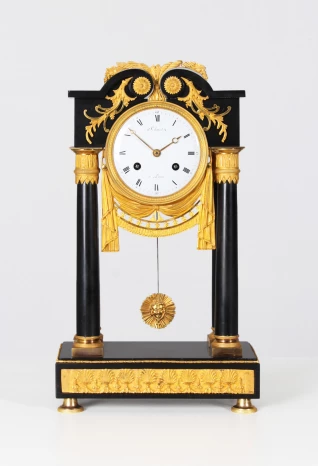
Antique Portal Clock
France
Marble, bronze, enamel
Directoire around 1800
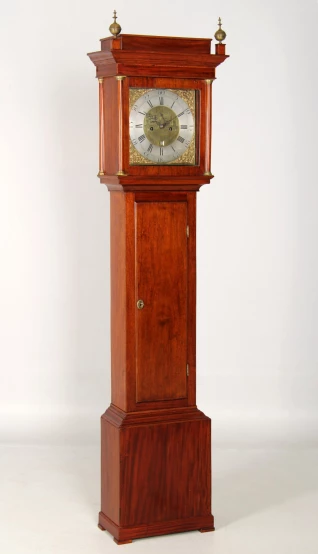
George III grandfather clock - James Pike
England (Newton Abbot)
Mahogany
circa 1790
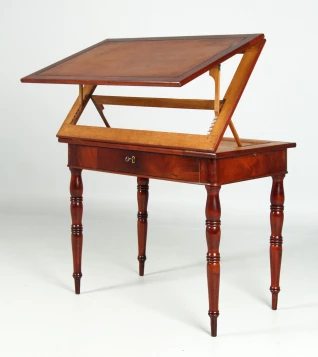
Antique architect's table
France
Mahogany
Mid 19th century
